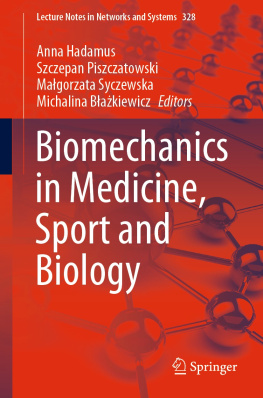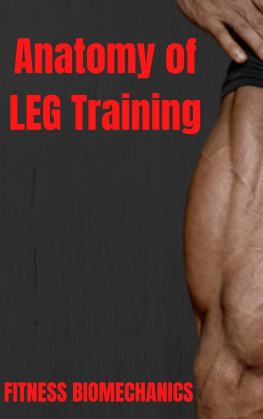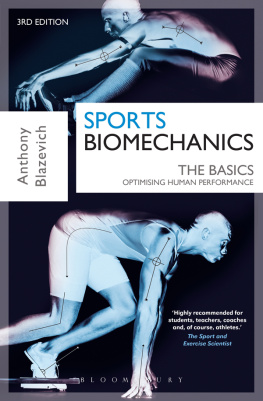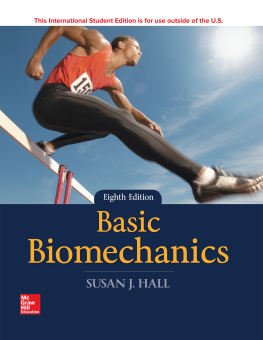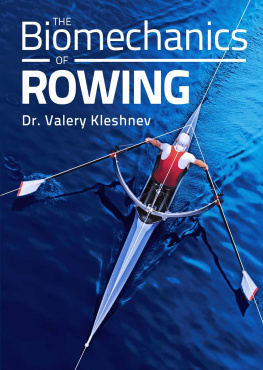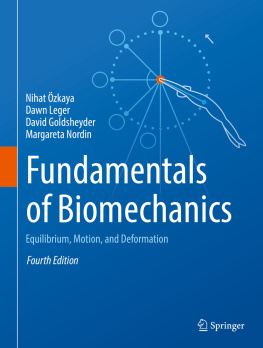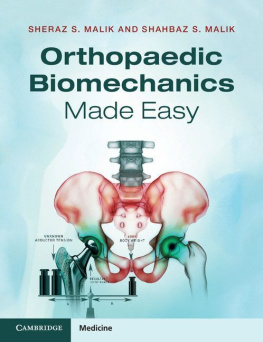1.1 Mechanics
Mechanics is a branch of physics that is concerned with the motion and deformation of bodies that are acted on by mechanical disturbances called forces. Mechanics is the oldest of all physical sciences, dating back to the times of Archimedes (287212 BC). Galileo (15641642) and Newton (16421727) were the most prominent contributors to this field. Galileo made the first fundamental analyses and experiments in dynamics, and Newton formulated the laws of motion and gravity.
Engineering mechanics or applied mechanics is the science of applying the principles of mechanics. Applied mechanics is concerned with both the analysis and design of mechanical systems. The broad field of applied mechanics can be divided into three main parts, as illustrated in Table .
Table 1.1
Classification of applied mechanics
In general, a material can be categorized as either a solid or fluid. Solid materials can be rigid or deformable. A rigid body is one that cannot be deformed. In reality, every object or material does undergo deformation to some extent when acted upon by external forces. In some cases the amount of deformation is so small that it does not affect the desired analysis. In such cases, it is preferable to consider the body as rigid and carry out the analysis with relatively simple computations.
Statics is the study of forces on rigid bodies at rest or moving with a constant velocity. Dynamics deals with bodies in motion. Kinematics is a branch of dynamics that deals with the geometry and time-dependent aspects of motion without considering the forces causing the motion. Kinetics is based on kinematics, and it includes the effects of forces and masses in the analysis.
Statics and dynamics are devoted primarily to the study of the external effects of forces on rigid bodies, bodies for which the deformation (change in shape) can be neglected. On the other hand, the mechanics of deformable bodies deals with the relations between externally applied loads and their internal effects on bodies. This field of applied mechanics does not assume that the bodies of interest are rigid, but considers the true nature of their material properties. The mechanics of deformable bodies has strong ties with the field of material science which deals with the atomic and molecular structure of materials. The principles of deformable body mechanics have important applications in the design of structures and machine elements. In general, analyses in deformable body mechanics are more complex as compared to the analyses required in rigid body mechanics.
The mechanics of deformable bodies is the field that is concerned with the deformability of objects. Deformable body mechanics is subdivided into the mechanics of elastic, plastic, and viscoelastic materials, respectively. An elastic body is defined as one in which all deformations are recoverable upon removal of external forces. This feature of some materials can easily be visualized by observing a spring or a rubber band. If you gently stretch (deform) a spring and then release it (remove the applied force), it will resume its original (undeformed) size and shape. A plastic body, on the other hand, undergoes permanent (unrecoverable) deformations. One can observe this behavior again by using a spring. Apply a large force on a spring so as to stretch the spring extensively, and then release it. The spring will bounce back, but there may be an increase in its length. This increase illustrates the extent of plastic deformation in the spring. Note that depending on the extent and duration of applied forces, a material may exhibit elastic or elastoplastic behavior as in the case of the spring.
To explain viscoelasticity, we must first define what is known as a fluid . In general, materials are classified as either solid or fluid. When an external force is applied to a solid body, the body will deform to a certain extent. The continuous application of the same force will not necessarily deform the solid body continuously. On the other hand, a continuously applied force on a fluid body will cause a continuous deformation (flow). Viscosity is a fluid property which is a quantitative measure of resistance to flow. In nature there are some materials that have both fluid and solid properties. The term viscoelastic is used to refer to the mechanical properties of such materials. Many biological materials exhibit viscoelastic properties.
The third part of applied mechanics is fluid mechanics . This includes the mechanics of liquids and the mechanics of gases .
Note that the distinctions between the various areas of applied mechanics are not sharp. For example, viscoelasticity simultaneously utilizes the principles of fluid and solid mechanics.
1.2 Biomechanics
In general, biomechanics is concerned with the application of classical mechanics to various biological problems. Biomechanics combines the field of engineering mechanics with the fields of biology and physiology. Basically, biomechanics is concerned with the human body. In biomechanics, the principles of mechanics are applied to the conception, design, development, and analysis of equipment and systems in biology and medicine. In essence, biomechanics is a multidisciplinary science concerned with the application of mechanical principles to the human body in motion and at rest.
Although biomechanics is a relatively young and dynamic field, its history can be traced back to the fifteenth century, when Leonardo da Vinci (14521519) noted the significance of mechanics in his biological studies. As a result of contributions of researchers in the fields of biology, medicine, basic sciences, and engineering, the interdisciplinary field of biomechanics has been growing steadily in the last five decades.
The development of the field of biomechanics has improved our understanding of many things, including normal and pathological situations, mechanics of neuromuscular control, mechanics of blood flow in the microcirculation, mechanics of air flow in the lung, and mechanics of growth and form. It has contributed to the development of medical diagnostic and treatment procedures. It has provided the means for designing and manufacturing medical equipment, devices, and instruments, assistive technology devices for people with disabilities, and artificial replacements and implants. It has suggested the means for improving human performance in the workplace and in athletic competition.
Different aspects of biomechanics utilize different concepts and methods of applied mechanics. For example, the principles of statics are applied to determine the magnitude and nature of forces involved in various joints and muscles of the musculoskeletal system. The principles of dynamics are utilized for motion description and have many applications in sports mechanics. The principles of the mechanics of deformable bodies provide the necessary tools for developing the field and constitutive equations for biological materials and systems, which in turn are used to evaluate their functional behavior under different conditions. The principles of fluid mechanics are used to investigate the blood flow in the human circulatory system and air flow in the lung.



